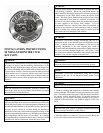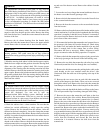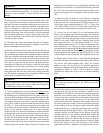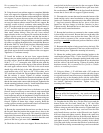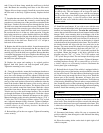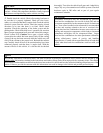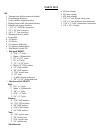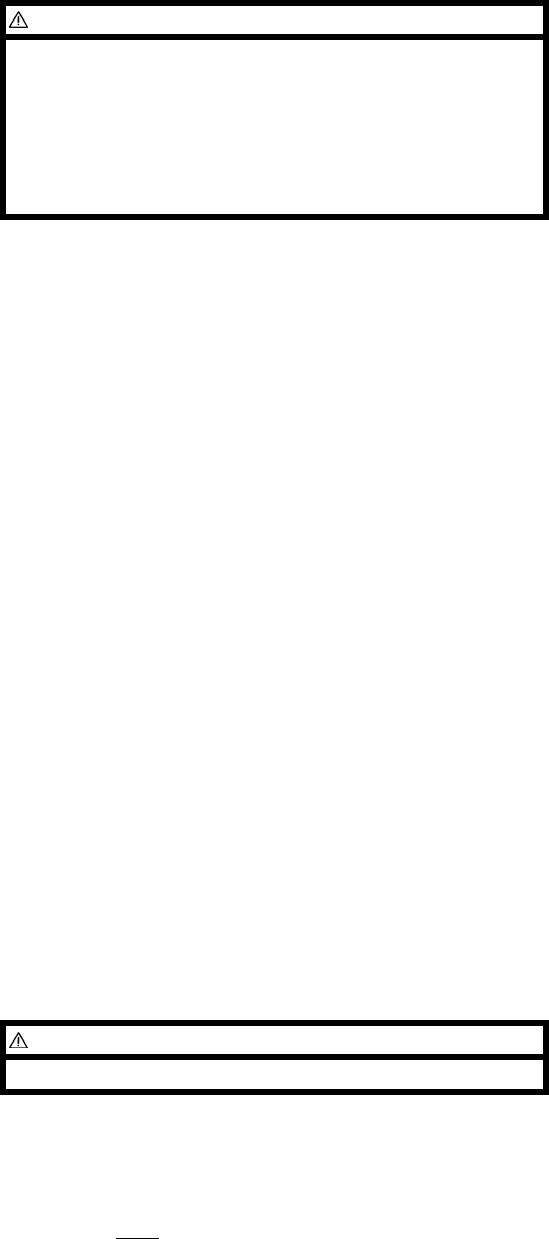
tank. Using a #6 hose clamp, attach the small hose to the fuel
tank. Reconnect the remaining small hose to the filler neck.
Tighten all hose clamps securely. Install the screws that mount
the filler neck to the body. Tighten securely. Replace the fuel
cap.
37. Lengthen the transmission shift lever. Scribe a line along the
shift lever below the bend. Be extremely careful during this
procedure to not damage any of the parts that are attached to the
shift levers. Cut the lever into two pieces through the line. Insert
the shift lever extension between the two parts of the shift lever.
The tapered end of the extension goes toward the bottom. Both
parts of the shift lever should slide into each end of extension.
Be sure that the lever is all the way in the extension. Using the
holes in the extension as a guide, mark the shift lever for drilling.
Drill a 1/8” hole through each part of the shift lever. Reinstall the
shift lever into the extension. Align the holes in the extension
with the holes in the shift lever. Install a 1/8” x ¾” roll pin at
both ends of the extension.
38. Replace the shift lever in the vehicle. Insert the transmission
shift lever into the top of the transmission. Be sure that it is all
the way in replace the cover. Install the spacer shim. Install the
retaining clip. Check the shift lever operation. Be sure that there
is complete engagement in all gears. Replace the shift boot and
housing assembly. Tighten all mounting screws securely. Check
the shift lever operation again.
39. Replace the carpet and matting to its original position.
Replace both kick panels and both doorjamb scuff plates.
Tighten the mounting screws securely.
40. Using the stock bolts, mount the front bumper brackets to
the frame. Tighten the mounting bolts so the brackets cannot
move, but so the bumper can still be adjusted. Slide the front
bumper onto the relocating brackets. Align the holes in the stock
bumper brackets with the holes in the new bumper brackets. The
rear leg of the stock bracket will need to be trimmed to clear the
bend in the bracket. Mark the bottom of the rear leg where it
contacts the bend on the new bracket. The bottom valance will
need to be notched around the frame horns. Mark the valance
around the frame horns. Remove the bumper from the vehicle.
Trim the rear leg on the stock bumper brackets. The cut should
go through the bottom of the mounting hole. Notch the valance
to clear the frame horns. Reinstall the bumper on the vehicle.
Mount the bumper to the relocating brackets using two 7/16” x
1" bolts, four 7/16” USS (large) washers, and two 7/16" nylock
nuts. Adjust the bumper to body clearance. Tighten all bumper-
mounting hardware securely. We recommend the use of loctite or
a similar adhesive on all mounting hardware. Reconnect the
wires to the driving lights.
41. Reinstall the grill to the core support. Tighten all mounting
screws securely.
WARNING
Raising the rear bumper is intended to enhance the appearance of
the vehicle only. The rear bumper will no longer be rated for
towing of any kind. Attempting to tow with the rear bumper
after it has been raised can result in damage to the vehicle and
possible personal injury. A class III receiver hitch must be
installed in order to tow with the vehicle after the rear bumper
has been raised.
42. Install the rear bumper. If you wish to tow with the rear
bumper, reinstall the bumper in the stock location using the stock
brackets and mounting hardware. To raise the rear bumper,
remove the two bolts that mount each rear bumper bracket to the
bumper. Drill a new mounting hole in the bumper side of the
stock bumper bracket according to the diagram. Hold the bumper
bracket against the frame in the stock location. Pivot the rear of
the bracket upward until the last hole on the bracket is aligned
with the bottom of the slotted hole in the frame. The first hole in
the bracket should still align with the last stock hole in the
bumper. The center mount hole should also align with a hole in
the frame. Mount the brackets to the frame using the 7/16” x 1”
bolts, 7/16’ USS washers, and 7/16” nylock nuts provided. Do
not tighten. Mount the bumper to the holes specified in the
diagram using the 7/16” x 1” bolts, 7/16’ USS washers, and
7/16” nylock nuts provided. The rear bumper should align with
body. Adjust the bumper to body clearance. Tighten all bumper-
mounting hardware securely. We recommend the use of loctite or
a similar adhesive on all mounting hardware. Reconnect the
license plate lights to the bumper.
43. Reinstall the air cleaner. If the vehicle is equipped with a/c,
the back right corner of the housing must be notched to clear the
a/c line at the firewall. Trim the bottom of the housing just to the
left of the corner just enough for the a/c line to clear. Install the
bottom part of the housing. Reconnect all houses that were
disconnected at the beginning of the installation. Trail fit the top
of the housing. Mark the top where it makes contact with the a/c
line. Notch this section of the top housing. Install the top of the
housing. Install the air intake duct to the upper radiator mounting
brackets. Install the mounting screws and tighten securely.
WARNING
All welding should be performed by a certified welder only.
44. Install the four bed overload pads on the frame over in the
wheel wells. There should be two places on each side where the
bed rested on the frame, but was not mounted to the frame. This
is where the overload pads go. The pads need to be tack welded
to the frame
only.
45. Reconnect both battery cables. Be sure to reconnect the
positive cable first, then the negative cable. Reinstall the airbag
fuse if equipped.
46. Place the warning sticker on the dash in plain sight of all
vehicle occupants.



